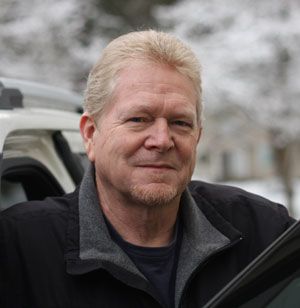Rolling roadblocks
An email from reader R.R. recently caught my attention. As I had just spent 100 hours in the driver’s seat on 6000-mile road trip, his note struck a familiar tone.
He wrote, “One pet peeve I have is this: on a 2 lane each way freeway, sometimes going up hill, a semi truck elects to pass another semi and moves into the passing lane, where it remains sometimes as long as 5 or 10 minutes because apparently it can’t pass the other, thereby blocking the passing lane for several miles while traffic piles up behind. It would seem that this is a violation of the rule requiring users of the passing lane to only use it to pass, as in fact it is not passing. Very frustrating. Generally truck drivers are very aware and courteous but apparently not all the time. Your take?”
During my lengthy run, I felt R.R.’s pain over and over. Unfortunately, the scenario he described happens regularly on major Interstate highways (truck routes) that have only two lanes available for traffic in each direction. The frustration of slow trucks “passing” slower trucks is rampant on the roadways I’ve just traveled, such as I-15, I-20, I-40 and others.
Truckers argue that they cannot lose momentum for upcoming grades, but those upcoming grades are one of the conditions that leaves them astride other trucks for miles, creating roadblocks as they attempt to pass. As R.R. implies, at times, defining their action as a “pass” is arguable. If a trucker initiates a passing attempt that is thwarted by a grade or a speed gain by the truck being passed, they are reluctant to abandon the pass by backing off and pulling back in.
Understandably, truck drivers like to hold momentum since they cannot regain it as easily as passenger vehicles. That circumstance often causes them to pull out to pass a truck that they are gaining on even though they may not have sufficient speed to accomplish the pass expediently. I’m sure they would argue that their action is still a pass, even though it is painfully slow to following traffic. They may also remark that the resulting holdup to others should be tolerable in the big picture.
The only answer I see to the conflict is the availability of three or more lanes for traffic moving in the same direction. In the absence of a third lane, momentary road blocks will periodically appear as “the slow” need to get past “the slower.”
It’s unlikely that many truck drivers will choose to lose momentum by waiting to pass a slower vehicle until all faster traffic has passed — it’s impractical, at least in heavy traffic. If they don't make their move to pass when the opportunity arises, they may be stuck behind the slower vehicle for a long while.
So, as long as commodities are commonly transported via 18-wheelers, we are likely to experience “rolling roadblocks” as those trucks coexist with other cars and trucks. In severe cases, where the pass takes “forever,” most states do have a law against holding up multiple vehicles — in Washington, that number is 5; in Idaho it is 3.
A related nuisance I experienced many times on the recent road trip was signage on the right-hand side of the road being obscured from my vision due to unfortunate timing of passing a truck. Short of erratically disrupting traffic flow, it’s another irritating driving condition with little solution. Time after time, I was unable to read upcoming speed limit, miles-to-cities, exit labels, et cetera, as I made left lane freeway passes past semi-trucks in the right lane with sign-blocking trailers in tow.
That nuisance is not the fault of the truckers, but just another condition that passenger drivers must deal with. Certain things are not easy to fix, however a couple states placed speed limit signs on both the right and left side of the lanes — a welcome relief to the dilemma of blocked signage.
Also related, Washington is not alone in its “Stay Right Except to Pass” stance — every other state touts the same, and Texas signs state, “Left Lane for Passing Only.”
Readers may contact Bill Love via e-mail at precisiondriving@spokesman.com
